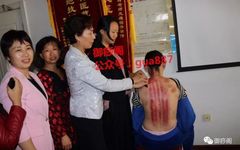Gua Sha is one of the traditional natural therapies in China. It is well-known among middle-aged and elderly individuals and is often used to treat various common ailments. The back is one of the most common areas for Gua Sha, and it is particularly effective for colds when applied along the sides of the spine. However, it is important to note that one should not frequently limit Gua Sha to just the back.

The back is a primary area for Gua Sha because the skin there is relatively thick and more resilient compared to other parts of the body. Additionally, the spinal area of the back is the main pathway of the Du Mai (Governing Vessel), which governs the Yang Qi of the body. Finally, the sides of the spine are the main pathways of the Taiyang Bladder Meridian.
Applying Gua Sha to the back helps to generate Yang Qi, release the exterior and dispel cold, warm the middle and nourish the stomach, warm the kidneys and secure essence, and balance Yin and Yang, among other benefits. However, frequently performing Gua Sha solely on the back can have certain side effects. If one continuously or frequently performs Gua Sha only on the back, it may lead to the leakage of Yang Qi and an increase in Yin Qi, resulting in an imbalance of Yin and Yang in the body, which can lead to decreased immunity and symptoms such as fatigue, abdominal distension, palpitations, chest tightness, and hypoglycemia.
Therefore, middle-aged and elderly individuals should not limit Gua Sha to just the back when performing it at home; it is best to combine it with other areas to achieve the desired health benefits.
Head and Face Gua Sha—Refreshing and Beautifying
Gua Sha on the head in the morning awakens the mind and enhances wisdom;
It alleviates headaches and prevents brain atrophy and strokes.
Traditional Chinese Medicine (TCM) believes that “the head is the meeting point of all Yang, and the brain is the residence of the Yuan Shen (Original Spirit)”. All Yang meridians of the body ascend to the head. If pathogenic factors obstruct the flow of Qi and blood, symptoms such as dizziness, headaches, and even nausea and vomiting may occur.
The head and face have pathways of the Du Mai, the Yangming Stomach Meridian, the Shaoyang Gallbladder Meridian, the Taiyang Bladder Meridian, the Jueyin Liver Meridian, the Yangming Large Intestine Meridian, the Shaoyang Sanjiao Meridian, and the Taiyang Small Intestine Meridian. When these meridians are obstructed, areas along their pathways may experience tenderness, sharp pain, or dull aches. If one pays attention, they may notice that discomfort or pain often follows a specific line or area. For example, migraines are mostly related to the Shaoyang Meridian, while frontal headaches are associated with the Yangming Meridian. These common pains can be treated by scraping along the corresponding meridian.
Regularly scraping the head has miraculous effects in awakening the mind and opening the orifices. It can improve blood circulation in the head, unblock the flow of Yang Qi, and can also prevent and treat hypertension, headaches, dizziness, cerebral embolism, post-stroke sequelae, insomnia, memory decline, premature graying of hair, hair loss, and dandruff.

The face, which includes the entire area below the Yintang (the space between the eyebrows), is where the Qi and blood of the 365 collaterals converge and flow to the orifices. Many meridians intersect in the facial area, making it a concentrated reflection of the body’s Qi and blood. TCM diagnosis often involves observing the color and expression of the face, which can reveal the functional state of the organs, the balance of Qi, blood, and fluids, and even provide insight into a person’s inner world. Thus, the face serves as our portal and window. Even severe cervical spondylosis can be treated with Gua Sha.
Regularly scraping the face can have beautifying effects, removing spots and preventing facial diseases such as rhinitis, eye diseases, ear diseases, trigeminal neuralgia, oral inflammation, and dental issues.
Gua Sha Skin Renewal Technique
Neck and Shoulder Gua Sha—Unblocking the Hub of Whole Body Circulation
Regularly scraping the neck and shoulders relieves fatigue and promotes relaxation;
It alleviates cough, reduces fever, and treats throat pain, while also preventing neck, shoulder, and back pain.
The neck and shoulders are crucial connecting points between the head and the body, with pathways of the Du Mai, Bladder Meridian, Large Intestine Meridian, Small Intestine Meridian, and Gallbladder Meridian passing through. Therefore, both the invisible Qi and blood meridians of TCM and the visible blood vessels and nerves of Western medicine must pass through the neck to connect the limbs and organs, allowing them to function properly. The neck is like a strategic point in military terms; if the meridians in the neck are obstructed, it can lead to discomfort or even dysfunction in the head and limbs.

Individuals experiencing headaches, arm numbness, or soreness often suffer from neck and shoulder meridian obstructions due to wind, cold, dampness, or blood stasis. Regularly scraping the neck and shoulder area, focusing on acupoints such as Fengfu, Tianzhu, Jianjing, Dazhui, and Tianzong, can help unblock the meridians, treat the aforementioned conditions, maintain smooth meridian flow, balance Qi and blood, relieve stress, and prevent cervical spondylosis and neck muscle strain.
Cervical Spondylosis is Not a Disease in the Face of Gua Sha Therapy
Chest and Abdomen Gua Sha—Balancing Yin and Yang for Longevity
Regularly scraping the chest and abdomen can yield great benefits, regulating the organs and unblocking the Yin meridians;
It can prevent heart, lung, and breast diseases, and has remarkable effects on weight loss and body shaping.
TCM often uses the concept of Yin and Yang to describe the human body, where the interior is Yin and the exterior is Yang; the abdomen is Yin and the back is Yang. Therefore, the chest and abdomen are primarily governed by Yin meridians, such as the Ren Mai (Conception Vessel), the Taiyin Spleen Meridian, the Shaoyin Kidney Meridian, and the Jueyin Liver Meridian, along with the only Yang meridian that runs anteriorly, the Yangming Stomach Meridian. The Ren Mai runs along the midline of the chest and abdomen, governing all Yin meridians and acting as the sea of Yin meridians, regulating the Qi of all Yin meridians. The thoracic and abdominal cavities are the palaces of the five organs and six bowels, making the chest and abdomen areas where the Qi of the organs is concentrated. Each organ has a corresponding area where its Qi is most concentrated, known as the Mu point. These points are where the Qi of the organs converges in the chest and abdomen, corresponding to the back Shu points. Even severe cervical spondylosis can be treated here, as these points can become tender or sensitive when organ function is impaired. When a specific organ is diseased, corresponding back Shu and Mu points will exhibit tenderness or sensitivity, or sensations of soreness and pain. At this time, one can use the Mu and Shu points in combination for treatment, such as using Zhongfu and Feishu points for lung diseases like cough and asthma; Riyue and Dan Shu points for cholecystitis and liver colic; and Zhongwan and Weishu points for stomach pain and bloating, which can often yield immediate effects.
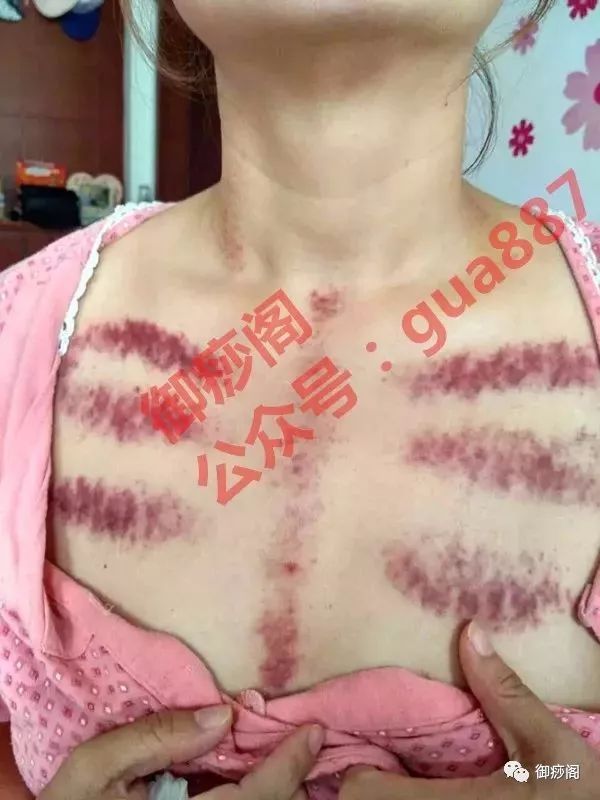
Regularly scraping the chest can prevent and treat heart and lung diseases, while women can effectively prevent and treat breast hyperplasia, mastitis, and breast cancer. Regularly scraping the abdomen not only helps with fat reduction and weight loss but also prevents and treats diseases of the liver, gallbladder, spleen, stomach, kidneys, bladder, and intestines, as well as gynecological diseases.

Lower Back and Waist Gua Sha—Boosting Yang Qi of the Five Organs
Regularly scraping the lower back can enhance Yang Qi throughout the body;
It strengthens the organs and bolsters the waist, alleviating urinary and reproductive diseases.
The back holds a significant position in Gua Sha, primarily with the Du Mai and the Taiyang Bladder Meridian running through it. The Du Mai is connected to all six Yang meridians, known as the sea of Yang meridians, and regulates the Qi of all Yang meridians; the Taiyang Bladder Meridian gathers the essence of the five organs and governs the Yang Qi of the entire body.

During the Ming Dynasty, the renowned physician Zhang Jingyue summarized the principles of Gua Sha therapy: “The essence of the five organs is attached to the back, so scraping downwards will also expel the pathogenic Qi… Although there are methods for scraping the arms, they can only treat pain; for deep toxins and urgent diseases, treatment must focus on the back.” This highlights the importance of the back in Gua Sha. “The essence of the five organs is attached to the back” refers to the Shu points along the Bladder Meridian in the lower back, which reflect the functional state of the organs on the body surface. Therefore, when organ function is impaired, one can find tenderness or reaction points at the corresponding Shu points. For example, individuals with colds or asthma may experience significant tenderness at the Feishu point; those with kidney deficiency may find tenderness at the Shenshu point; and individuals with stomach pain may feel tenderness or discomfort at the Weishu point. By locating the reaction points of various organs and scraping these Shu points, one can adjust the Qi and blood of the organs, expel pathogenic factors, and achieve the goal of disease elimination and health restoration. Conditions such as heat stroke, vomiting, stomach pain, gallbladder colic, chest and abdominal pain, low back pain, coronary heart disease, hypertension, hypotension, angina, stroke, arrhythmia, myocardial infarction, high fever, asthma, bronchitis, and emphysema can all be effectively treated by scraping the corresponding Shu points on the lower back.
What Effects Can Be Expected After Two Gua Sha Treatments for “Post-Stroke Sequelae”?
Professor Wang Treats “Post-Stroke Sequelae” for Students in Zhejiang
Upper Limb Gua Sha—Small Changes Can Make a Big Difference
Gently scraping the upper limbs can regulate the organs with infinite benefits;
It nourishes the heart, regulates the lungs, and harmonizes the intestines, while also preventing and treating numbness and soreness in the hands.
There are six meridians running through the arms, with the three Yang meridians running from the hands to the head and the three Yin meridians running from the chest to the hands. The three Yin meridians run along the inner side, while the three Yang meridians run along the outer side, creating a balance of Yin and Yang, with adjacent positions and synchronized changes, corresponding to our six internal organs.
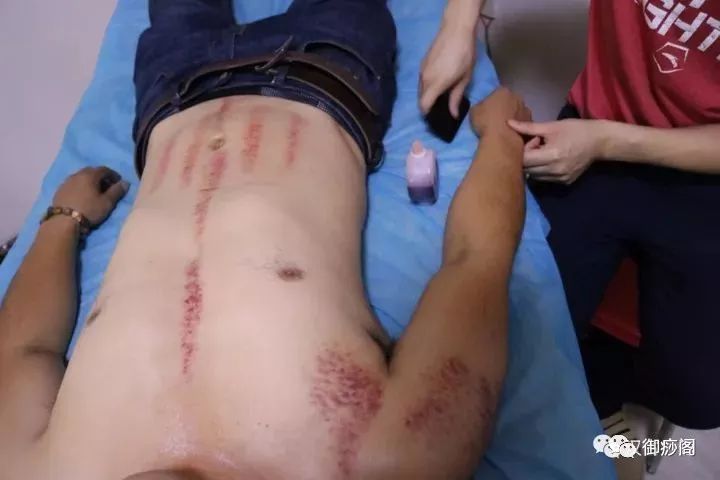
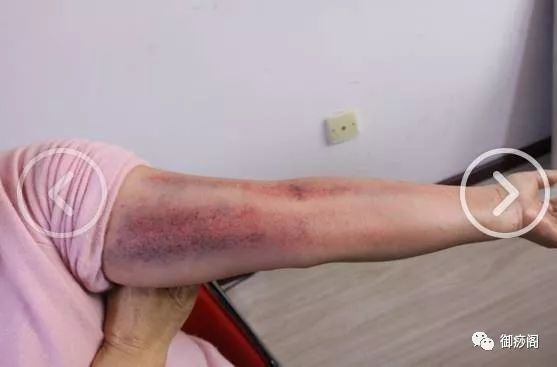
The lungs and large intestine are interrelated; if the large intestine meridian is obstructed, symptoms such as headaches, lower toothaches, facial paralysis, abdominal pain, diarrhea, constipation, and pain in the index finger may occur. This can make one more susceptible to colds, sore throats, and heat stroke due to obstruction of the lung meridian. When the lung meridian is obstructed, symptoms such as colds, coughs, shortness of breath, chest fullness, sore throats, and pain along the inner edge of the arm and cold pain in the shoulders and back may arise, along with abdominal pain and diarrhea or constipation due to large intestine obstruction. The heart and small intestine are also interrelated; when the small intestine meridian is obstructed, symptoms such as deafness, facial swelling, sore throats, lower abdominal pain, and back pain may occur, often accompanied by symptoms of heart obstruction such as mouth sores and thirst. When our body exhibits such symptoms, we can trace the meridians to find tenderness points, determine which organ’s function is impaired, and identify the obstructed meridian. By scraping along the meridian, we can relieve the pain and achieve good therapeutic effects for the corresponding diseases.
Lower Limb Gua Sha—Strengthening Muscles and Bones, Making You Feel Ten Years Younger
Regularly scraping the lower limbs can invigorate Qi and blood;
It strengthens the organs and bones, and benefits the joints, alleviating numbness in the waist and legs.
There are six meridians running through the lower limbs: the three Yang meridians run from the head to the feet, and the three Yin meridians run from the feet to the chest. The three Yin meridians run along the inner side, while the three Yang meridians run along the outer side, creating a balance of Yin and Yang, with adjacent positions and similar functions, and they correspond to our six internal organs.
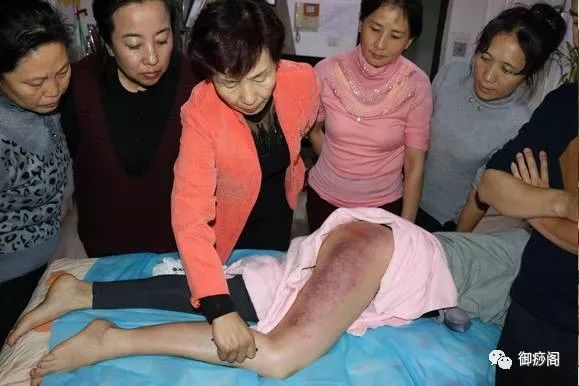
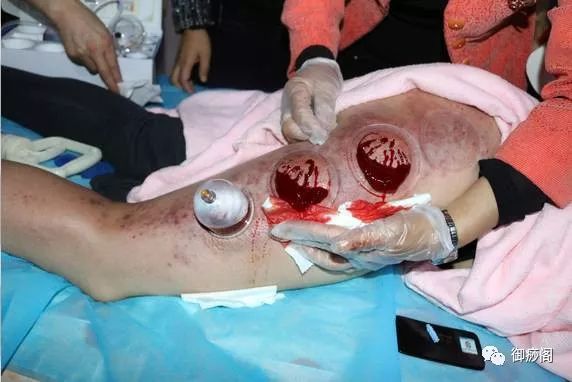
For example, the stomach and spleen are interrelated; when the stomach meridian is obstructed, symptoms such as headaches, upper toothaches, stomach pain, bloating, vomiting, sore throats, heat symptoms, and pain in the areas along the meridian may occur, often accompanied by symptoms of spleen obstruction such as abdominal distension. When the spleen meridian is obstructed, symptoms such as heaviness, weakness, pain at the root of the tongue, swelling in the inner thighs, and coldness may arise, along with symptoms of stomach obstruction such as stomach pain and vomiting. Additionally, the gallbladder and liver are interrelated, as are the bladder and kidneys; when one organ’s meridian is obstructed, it can also lead to symptoms in the corresponding meridian of another organ. Therefore, by following the meridian pathways and locating tenderness and reaction points, scraping along these areas can provide immediate relief or even cure these symptoms.

